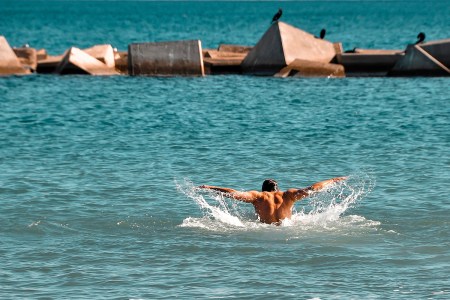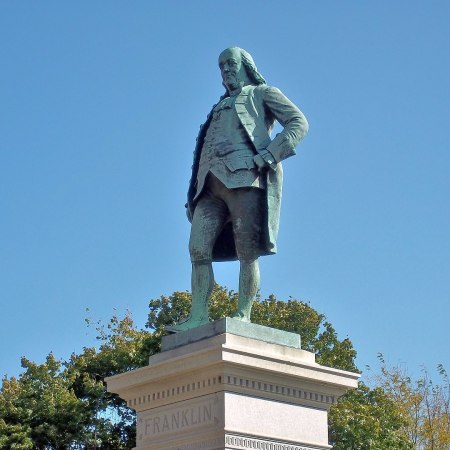When you look at the names of the aquatically-minded people honored by the International Swimming Hall of Fame, you’ll see a number of faces you’d expect — Olympians like Michael Phelps and Mark Spitz, for example. But you’ll also find at least one signatory of the Declaration of Independence there, a man better known for his diplomacy, almanacs and experiments with lightning. That’s right: Benjamin Franklin was a very talented swimmer.
What’s also notable about Franklin’s time in the water was his decision to forego clothing when he swam. In an excerpt from her book Swimming Pretty: The Untold Story of Women in Water, Vicki Valosik chronicled a fateful day in 1726 when Franklin — 19 years old at the time — went for a swim in a three-mile stretch of the Thames.
At the time, Valosik recounted, Franklin had already developed a reputation for his skill at swimming. This included using a number of different techniques in the water. “He could swim on his back, arms free to ferry dry clothes or declarations and treaties high above the water,” Valosik wrote. “He could even swim on his belly with his wrists tied behind his back.”
Franklin, it turns out, was both an avid swimmer himself and and advocate for others to take up swimming. His influence on popularizing swimming as both a gateway to good health and an enjoyable activity in its own right are among the reasons he’s been honored by contemporary institutions.
The Ironman’s Guide to Ocean Swimming
Saltwater beckons. But first, some ground rules from a world champion triathlete.As Mary Evans pointed out in a 1968 Sports Illustrated article, Franklin’s penchant for swimming continued long after that memorable swim in the Thames. Franklin swam for hours each day when he was in his 40s, she notes, and he continued swimming until at least his 70s. (Franklin died at the age of 84.) If you end up doing a few laps in the pool this summer, just think, Benjamin Franklin might be at the root of it.
This article was featured in the InsideHook newsletter. Sign up now.



















